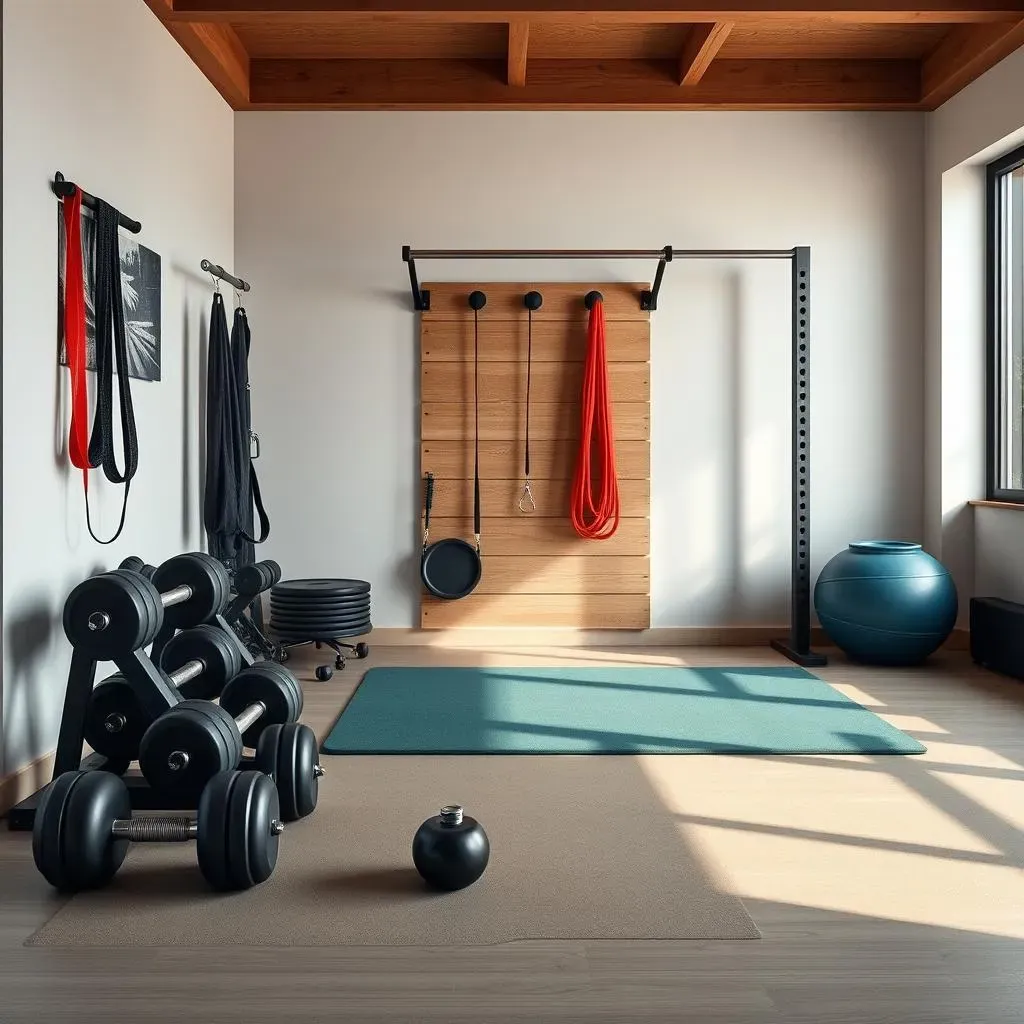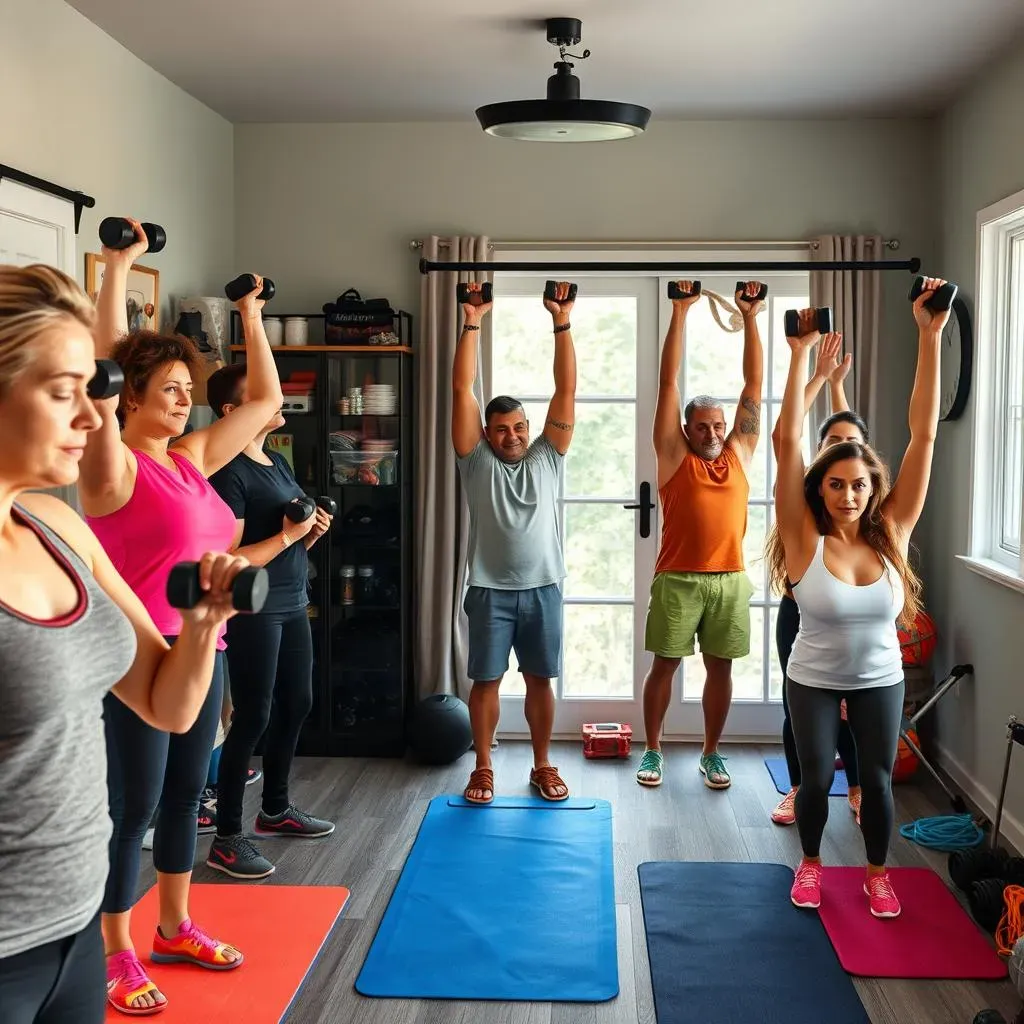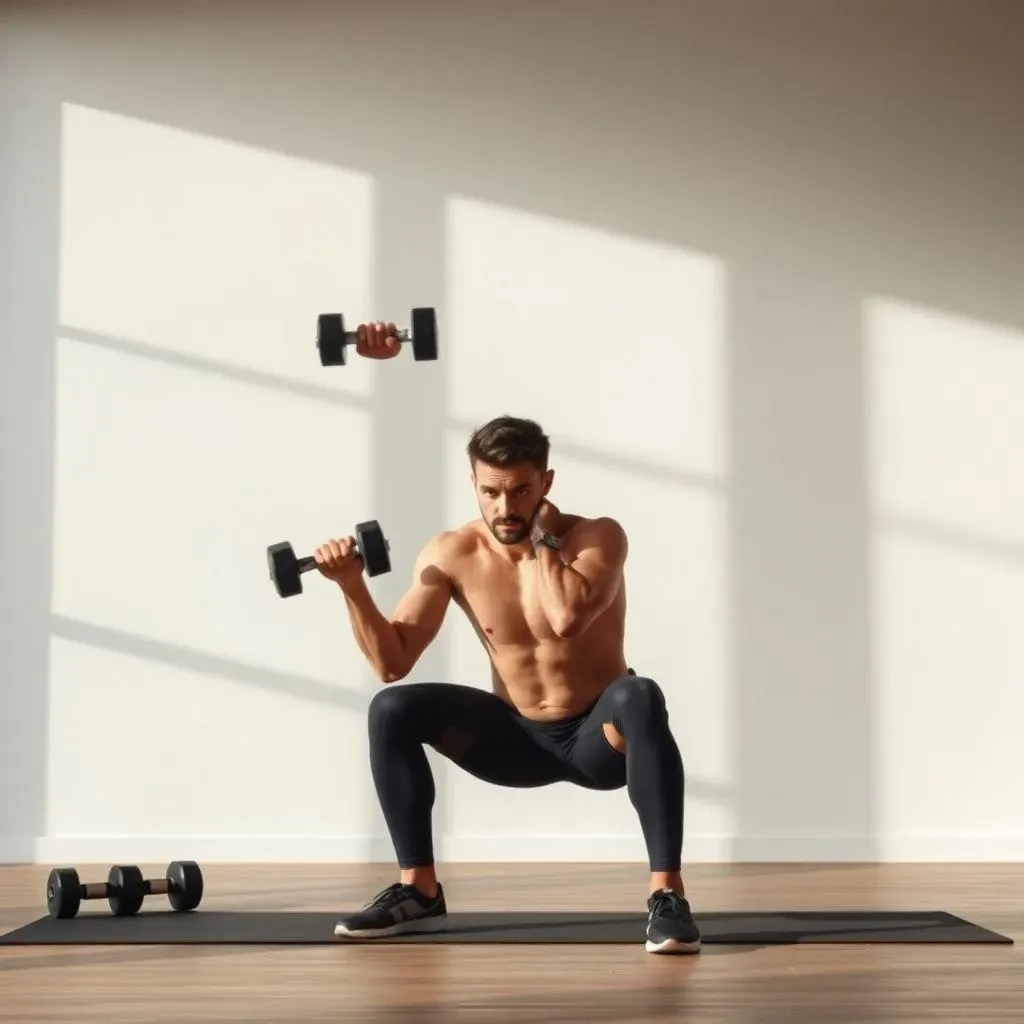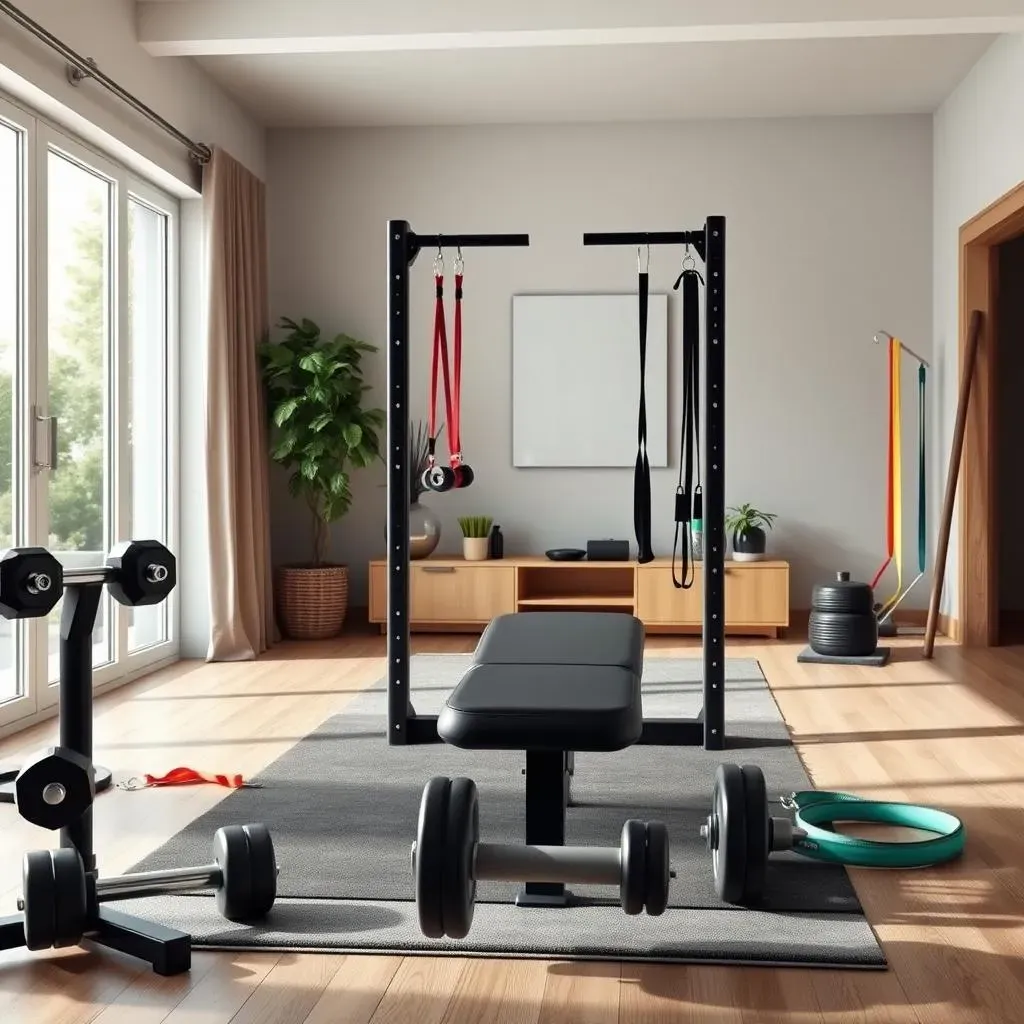Table of Contents
Tired of crowded gyms and expensive memberships? You're not alone. Many of us dream of building strength without leaving the house. The good news is that achieving a solid strength training routine from the comfort of your own home is not only possible, but it can also be incredibly effective and convenient. This article will guide you through everything you need to know about setting up your own space with the right home workout equipment for strength training. We'll look at essential pieces of equipment, explore various exercises you can do, and offer tips to make your home workouts as effective as possible. Whether you're a beginner or a seasoned fitness enthusiast, this guide will provide the tools and knowledge to kickstart your fitness journey at home, and help you transform your living room into your very own strength training sanctuary. Get ready to discover how simple it is to build strength without stepping foot outside!
Setting Up Your Home Gym for Strength Training

Setting Up Your Home Gym for Strength Training
Finding Your Space
Okay, so you're ready to build a home gym? Awesome! First things first, you've got to find the right spot. It doesn't need to be huge, but it should be a dedicated area where you can focus on your training without distractions. I started in my garage, which was a bit dusty, but it worked. Think about a spare room, a corner in your basement, or even a well-ventilated section of your living room. The key is to have enough space to move around comfortably and safely. You don't want to be bumping into furniture while you're trying to do a set of squats, trust me on that one.
Choosing Your Equipment
Now for the fun part, the gear! When it comes to home workout equipment for strength training, you don't need to buy everything at once. Start with the essentials and build up your collection as you progress. I began with a set of adjustable dumbbells, a resistance band, and a pull-up bar. These are versatile and allow you to perform a wide range of exercises. Don’t get caught up in the hype of fancy machines right away. Focus on foundational equipment that provides the most bang for your buck. A good mat is also a great idea, for comfort and to keep you from slipping. Also, think about storage: You want your equipment accessible but not in the way when you are not working out.
Equipment | Why it's Essential | My Recommendation |
|---|---|---|
Adjustable Dumbbells | Versatile for various exercises | A set that goes from 5-50 pounds |
Resistance Bands | Great for warm-ups and assistance | A set with different resistance levels |
Pull-Up Bar | Builds upper body strength | A sturdy door frame model |
Exercise Mat | Provides comfort and grip | A thick, non-slip option |
Budget and Planning
Setting up a home gym doesn't have to break the bank. You can find good quality equipment without spending a fortune. I started by checking out online marketplaces for used gear. You'd be surprised at what you can find at a fraction of the cost. Plan your purchases ahead of time, don't just buy the first thing you see. Also, think about the long-term. It's better to invest in a few quality pieces that will last, rather than a bunch of cheap stuff that will fall apart. Finally, don’t underestimate the power of free resources, there are tons of free workout plans and videos online that you can use to help you get started. It's all about being smart and strategic with your setup.
Essential Home Workout Equipment for Strength Training

Essential Home Workout Equipment for Strength Training
Alright, so you've got your space sorted, now let's talk about the real goodies: the equipment. When we're thinking about essential home workout equipment for strength training, we're not talking about those huge, clunky machines you see in commercial gyms. We're aiming for pieces that are versatile, effective, and won't take up half your living room. I've found that keeping it simple is key. You don’t need a ton of fancy gadgets to get a great workout, and in fact, sometimes less is more. It’s about maximizing what you have, and choosing tools that let you hit multiple muscle groups with a variety of exercises. So, let’s break down some of the must-haves that I think every home gym should have.
First off, adjustable dumbbells are a game changer. These are so much better than having a whole rack of individual weights. You can easily change the weight by adding or removing plates, which means you can challenge yourself as you get stronger. Next, resistance bands are your best friend for mobility, assistance, and adding extra resistance to bodyweight moves. Don’t underestimate them, they’re not just for stretching. A pull-up bar is also essential for building upper body strength, and is something that I think everyone should have. Finally, a good quality exercise mat is a must-have for providing comfort, and preventing slipping. With these pieces, you can cover a wide range of exercises. Remember, it's about smart choices, not necessarily expensive ones.
Equipment | Why it's a Must-Have | Exercises |
|---|---|---|
Adjustable Dumbbells | Versatile, scalable for all levels | Bicep curls, squats, presses |
Resistance Bands | Great for warm-ups, assistance, added resistance | Band pull-aparts, assisted pull-ups, squats |
Pull-Up Bar | Builds upper body strength effectively | Pull-ups, hanging leg raises |
Exercise Mat | Provides comfort and a safe area | Floor exercises, stretching |
Strength Training Exercises You Can Do at Home

Strength Training Exercises You Can Do at Home
Bodyweight Basics
Let's get down to business with some killer strength training exercises you can do at home, no fancy equipment needed for these. We're talking about the power of your own body weight. Start with the classics: squats, push-ups, and lunges. These are your bread and butter. For squats, stand with your feet shoulder-width apart, and lower yourself as if you’re sitting in a chair. Push-ups can be modified by doing them on your knees if regular ones are too tough. Lunges are awesome for legs, step forward with one leg and lower your hips until both knees are at a 90-degree angle. These exercises work multiple muscle groups and are perfect for building a solid base. Remember, form is more important than reps. It's better to do a few perfect reps than many sloppy ones.
Don't underestimate the power of planks for core strength. They’re simple but brutal. Get into a push-up position, but rest on your forearms instead of your hands. Keep your body in a straight line from head to heels, and engage your core. Hold it for as long as you can, aiming to increase your time each workout. Another great move is the glute bridge. Lie on your back with your knees bent, then lift your hips off the ground, squeezing your glutes at the top. These exercises can be done anywhere, anytime, and really make a difference.
Dumbbell and Resistance Band Workouts
Okay, now it's time to add some weights and resistance. With your dumbbells, you can do bicep curls, overhead presses, and rows. For bicep curls, hold a dumbbell in each hand and curl them up to your shoulders. Overhead presses are great for shoulder strength. Hold the dumbbells at shoulder level and push them straight up. Rows are done by bending over slightly, keeping your back straight, and pulling the dumbbells towards your chest. These exercises are amazing for building muscle and improving your overall strength. Do each exercise slowly and controlled, focusing on the muscle you are working.
Resistance bands add a different kind of challenge. You can use them for lateral walks, band pull-aparts, and assisted pull-ups. Lateral walks are done by putting a band around your ankles and stepping sideways. Band pull-aparts are great for your back and shoulders. Hold the band with both hands and pull it apart, squeezing your shoulder blades together. If pull-ups are too hard, use a resistance band to assist you. Loop it around the pull-up bar and place your foot in the loop. This gives you a bit of a boost. These exercises mix things up and keep your muscles guessing.
Exercise | Muscle Group | How to do it |
|---|---|---|
Squats | Legs and glutes | Lower hips as if sitting in a chair |
Push-ups | Chest, shoulders, triceps | Lower chest to floor, push back up |
Dumbbell Curls | Biceps | Curl dumbbells to shoulders |
Resistance Band Pull-aparts | Back and shoulders | Pull band apart, squeezing shoulder blades |
Plank | Core | Hold body in straight line from head to heels |
Tips for Effective Home Strength Training Workouts

Tips for Effective Home Strength Training Workouts
Consistency is Key
Alright, so you've got the gear and you know the exercises, but how do you make it all work? Well, the biggest secret to getting results with home strength training workouts is consistency. It's not about going all-out once a month, it's about showing up regularly. I try to workout at least three times a week, and that works for me. Find a schedule that fits into your life, and stick to it. It could be 30 minutes three times a week, or an hour twice a week, but the key is to make it a habit. Treat your workout sessions like important appointments that you can't miss. Remember, the small consistent efforts add up to big changes over time. Don’t get discouraged if you miss a day or two, just jump back in as soon as you can. It’s all about building that habit.
Progressive Overload
Another really important tip is to make sure you are always challenging yourself. It's easy to get stuck in a routine where you're doing the same exercises with the same weight, but your body will eventually adapt. To continue making progress, you need to gradually increase the difficulty of your workouts. This is called progressive overload. You can do this in a few ways. You can increase the weight you are lifting, increase the reps, or increase the number of sets. You can also decrease the rest time between sets or try harder variations of exercises. For example, if you can easily do 10 push-ups, try doing 12, or try doing them with your feet elevated. These small changes will keep your muscles challenged and growing. It's all about pushing your limits, but do it gradually and safely. Don’t try to do too much too soon, slow and steady wins the race, right?
Method | Description | Example |
|---|---|---|
Increase Weight | Lift heavier weights | From 10lb dumbbells to 12lb dumbbells |
Increase Reps | Do more repetitions per set | From 8 reps to 10 reps |
Increase Sets | Do more sets of each exercise | From 2 sets to 3 sets |
Decrease Rest | Reduce time between sets | From 90 seconds to 60 seconds |
Increase Difficulty | Try harder variations | From regular push-ups to elevated push-ups |
Listen to Your Body
Finally, and I can’t stress this enough, listen to your body. It's great to push yourself, but it's also crucial to recognize when you need to rest. If you are feeling pain, then stop, don't try to push through it. Overtraining can lead to injuries and setbacks. Make sure you get enough sleep and eat well, these are just as important as the workouts themselves. Recovery is a part of training, it’s when your muscles grow and get stronger. Also, don't compare yourself to others. Everyone starts somewhere, and everyone's journey is different. Focus on your own progress, celebrate the small wins, and don’t be afraid to take a break when you need one. It’s not a sprint, it’s a marathon, so pace yourself and enjoy the ride!
